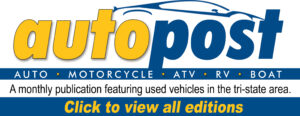Voters go to the polls this Tuesday for the Mountain State’s general election, and while charter schools aren’t on the ballot by name, they are most definitely part of the political air.
There’s Amendment 4 – which is on the ballot – that will ask voters to decide whether or not lawmakers should have greater oversight of the state’s public school system.
If passed, critics say the measure could drive families away from public schools and into home-schooling, charters and the like – thus freeing their kids from newly imposed political rancor and other partisan wrangling as they answer the morning bell.
The Hope scholarship is an unspoken presence.
By a 3-2 vote last month, the Supreme Court overturned a lower court ban of the scholarship, which grants $4,300 to qualifying families wishing to enroll their children in educational pursuits other than public school.
In the meantime, there are still ripples from last month’s report card for the country’s public schools, issued by the U.S. Department of Education.
The national assessment charts reading and math progress in fourth grade and eighth grade.
Both carry a 500-point scale, and no district – anywhere – came near to that.
While fourth-graders across the U.S. averaged 235 in math, their peers in West Virginia netted an average of 226.
Fourth-grade reading scores averaged out to 205 in West Virginia, opposed to 216 nationally.
The Mountain State’s eighth-graders came in with an average of 260 in math, compared to the country’s overall score of 273.
Now, charter schools are a presence in West Virginia.
Two brick-and-mortar charter schools are now operating in Morgantown and Martinsburg. Three more virtual endeavors have also be OK’d by the state.
Today, there are 7,696 charter schools nationwide, 3.3 million students attending them, and one big question: Do charter schools perform better than public schools?
Not according to the U.S. Department of Education, which in 2019 found “no meaningful difference,” it said, in math or English proficiency among the nation’s charter school eighth-graders.
A report that same year by Education Week, a trade publication, looked at earlier scores, public-versus-charters netted by students in 2005 – and again, in 2017.
Charter school scores for 2022 weren’t immediately available.
Meanwhile, the numbers over that 12-year span went back and forth, up and down, like a teeter-totter at recess.
In 2005, fourth-graders nationally averaged 237 in math, compared to the 232 average netted by their counterparts in charter school. Reading scores were separated by 1 point: 217 for public school to 216 for the charter school fourth-graders.
Eighth-graders in public school that year averaged 278 in math, while charter students in same grade scored 268. Public school students also outpaced their charter school counterparts by an average of 260 to 255 in reading.
Charter school fourth-graders by 2017 averaged 236 in math, compared to the average of 239 for students in that same grade in public school. Reading scores were marked by a 1-point difference: 266 for charter students, 265 for the public districts.
Both grades that year, as reported by Education Week, came in with the same scores for math: 282. Reading scores were the exact same as the fourth-graders, the publication said.
Donna Talerico, the deputy superintendent of schools for Monongalia County’s public district, said last week the most recent declines can all be traced back to COVID and remote learning – when schools across West Virginia and the nation were shuttered and instruction commenced via the computer monitor.
“Our kids need to be in their classrooms,” she said, “in front of their teachers.”
TWEET@DominionPostWV



